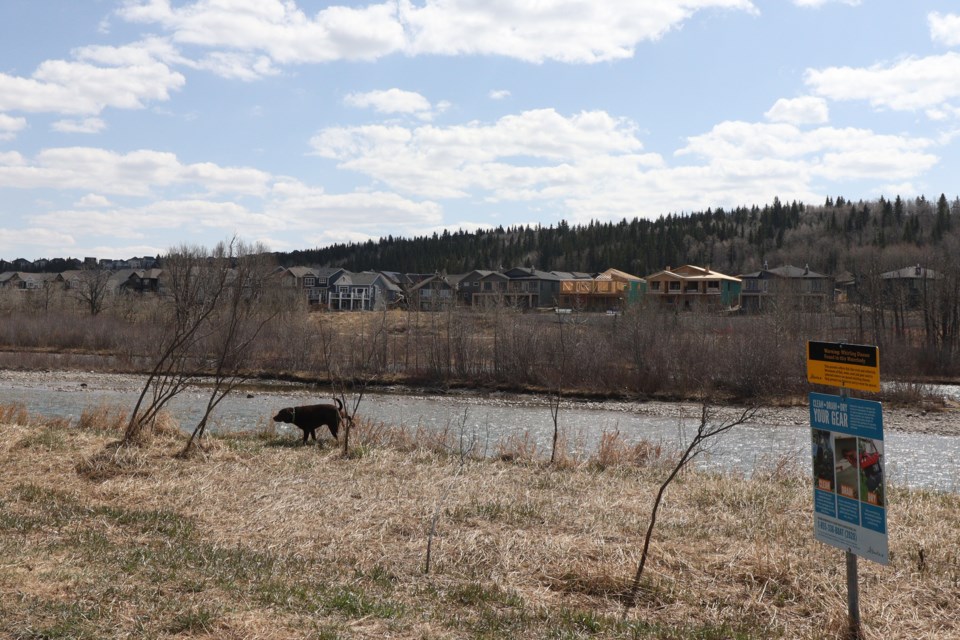In an effort to preserve and enhance one of Cochrane’s most vital natural assets, the Town has drafted the Bow River Strategy — a 20-year guiding document aimed at protecting the river while improving access and ensuring sustainable recreational use.
“As our population increases and recreational use expands, the riverfront is experiencing strain,” said Michelle Dulorme, Director of Parks & Active Living. “With limited infrastructure and fragmented management, we risk unintentionally harming the very qualities that make this space so special. Our goal is to ensure the strategy is not only visionary, but also practical, actionable, and aligned with Cochrane’s priorities.”
A draft version of the strategy was presented to council during the April 22 Committee of the Whole meeting. Administration will incorporate council feedback into a revised version, to be brought forward for adoption at a future date.
The nearly 300-page strategy outlines a long-term plan for managing the Bow River corridor. While ambitious in scope, Mayor Jeff Genung emphasized the importance of starting small to build momentum.
“There’s a lot in there with the 20 years that you’ve covered,” said Genung. “But how do we eat an elephant? One bite at a time.”
The mayor asked staff to identify low-cost, high-impact “quick wins” that could be implemented early. Suggestions included the creation of a trout sanctuary near the confluence, a wayfinding strategy, and accessibility improvements along the riverfront. However, CAO Mike Derricott noted that some of the most meaningful changes may be behavioural.
“It could be behavioural changes,” Derricott said. “People who’ve become familiar with a certain pattern of engagement with these spaces may find some of those behaviours need to change as we go forward.”
Given that the Bow River spans multiple municipalities, Genung also called for the strategy to align with broader plans such as the Jumping Pound Watershed Plan and the South Saskatchewan Regional Plan.
“I think it’s a reasonable ask to have the strategy directly align or cross-reference those plans,” he said.
A key topic during council review was the strategy’s implications for off-leash dog areas, particularly Jim Uffelmann Memorial Park, which runs adjacent to the Bow River.
“What we heard from dog owners is that they’re looking for a place for their dogs to swim, and they weren’t necessarily seeing other opportunities for that outside the corridor,” said Lee Giddens, a consultant for the Bow River Strategy.
To reduce pressure on the riverbank, the draft strategy recommends identifying alternative locations for off-leash access.
This raised concerns from Councillor Marni Fedeyko, who pointed out the lack of off-leash options elsewhere in town. Councillor Morgan Nagel echoed the concern and called for greater clarity on how such a recommendation would be implemented.
“This is one of the issues the community is going to want details about,” said Nagel. “As a councillor, I believe it’s my obligation to get those details before I approve this plan, because I know it’s going to be a hot-button topic.”
Nagel also pushed for increased setback zones for future developments near the river.
“Obviously there are reasonable limitations, but I think the bigger, the better,” he said. “The Bow River is the town’s greatest asset, and I want to make sure it’s protected.”
Other feedback from council included:
- A clear wildlife access strategy along the river corridor
- Options for a Bow River overlay in the Town’s land use bylaw
- A wildlife habitat preservation plan
- Improved raft and kayak access
- Long-term maintenance and servicing plans
Fedeyko also requested that clear policies be embedded in the final version.
“I’d rather see that built in, so when we go to the community, we can talk about all the things that go along with it,” she said.
The original plan was slated for adoption on May 12, but following council’s feedback, the final version will be delayed to an unspecified later date.




